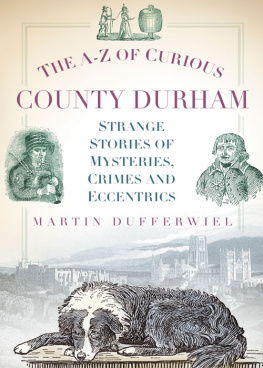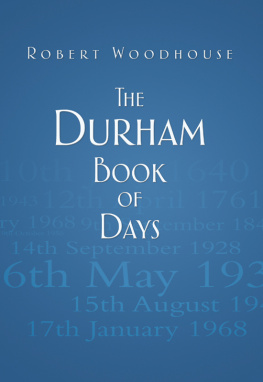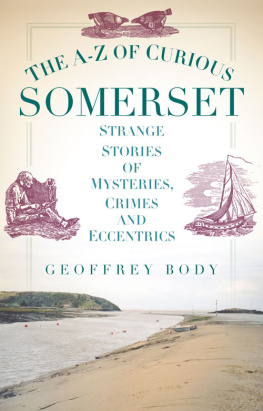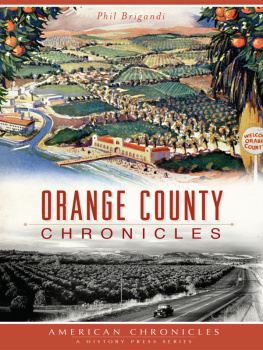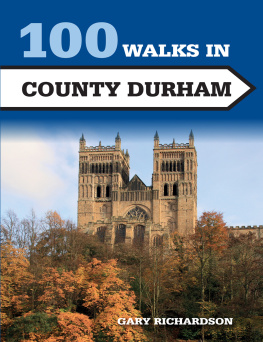
Contents
First of all, my thanks go to my family, for their patience and support during the preparation of this book.
Thanks also go to Helen Thompson, Divisional Librarian, and to the Durham County Library Service, for permission to reproduce illustrations from the titles listed under Standard References in the Bibliography, all of which can be viewed at Durham Clayport Library. As always I am grateful to staff of the Reference Section of the library for their knowledge and courtesy, and especially to Anita Thompson for her unfailingly polite assistance and ever-useful advice.
I am indebted to Mr Philip Davies, Chapter Clerk, Durham Cathedral, for his kind assistance. The photographs of St Cuthberts feretory are reproduced by kind permission of the Chapter of Durham.
I would also like to express my gratitude to Kate van Suddese, for kindly allowing me sight of her grandfathers collected but unpublished notes concerning the history of his beloved Durham City, some of which I have been happy to reproduce in this book.
Has nothing been, because the sound if it has died away from dull ears?
Sir Timothy Eden
This book is inspired in part by the wonderful and extensive chronicles, journals and periodicals committed to print by the historians, antiquarians and other seekers after the odd and the curious in Georgian and Victorian County Durham.
An anthology of fact, anecdote and collected folklore, it is also a miscellany of notable individuals, surprising events and strange happenings throughout the historical County Palatine, bounded by the River Tyne in the north and the River Tees in the south. Though written in an AZ format, the interpretation of that format and the narrative is left quite loose, to reflect the style of the old chronicles upon which it is based.
A small number of subjects have been covered in more detail in my previous books and apologies to all if this seems like repetition, but they remain curious, and as such have a rightful place in this particular book. There are also simple anecdotes of which, though perhaps slightly odd, some readers may think that the only truly curious thing about them is why they have been included at all. But they at least caught the eye of the author and were thought to have merit enough to be passed on.
And so, in the following pages, the reader will find stories of murder and mystery, visions and vanishings, as well as a sample of the many ghosts that lurk in Durhams shadows.
Samuel Johnson, writing in the eighteenth century, said of the appearance of ghosts: All argument is against it; but all belief is for it. For the modern reader it may appear that little has changed. Certainly we all enjoy a good ghost story whether we believe it to be entirely genuine, a hoax perpetrated upon the credulous, or a complete fabrication of events intended to achieve a specific response or result. A good haunting can also mean good marketing! Some ghost accounts related today as being genuine do seem to be supported by being set in a credible, if sometimes vague, historical context. Strangely, however, little or no account of them can be found in older chronicles, where perhaps it would be expected that they should be recorded.
But this is not meant to be a book about the ghosts of County Durham and there are a number of excellent publications on that particular subject, by authors far more expert on it than this one.

Of course many old stories, whether ghostly or not, will have undergone numerous developments over the years; variations, embellishments or perhaps even just being tweaked to make them more relevant or believable to a new or a different audience. And the curious can often search in vain for the definitive version. Indeed there have been in the past those gentleman antiquarians (the great historian of County Durham Robert Surtees among them) who had an easy and regular skill in discovering new old tales. Perhaps they really did come from the historical record, or perhaps from an indistinct and elusive source; perhaps occasionally from a certain old woman known only to the author, or from the grandfather of an anonymous servant; or perhaps, directly from their own imagination.
In this book, the reader will come across some tales both ancient and recent that are already well known and some characters that are familiar to us today as having played a significant role in the long story of County Durham. But the majority of the subjects are, quite literally, footnotes from our countys history. Perhaps this book will bring their story to a new readership. For in the words of James Clepham, first written down in 1888 and recorded for posterity in the second volume of the Monthly Chronicle :
The myths and marvels of the morning time, the good old stories and legends, the tales of our grandfathers and of theirs, shall forever be a human heritage.
Martin Dufferwiel,
2014
ALFREDS VISION
Among the pictures exhibited at the Royal Academy in 1890 was a painting entitled The Sanctuary by the Newcastle artist Ralph Hedley. It is an imagined depiction of what may have been a not unusual scene at the Great Door of Durham Cathedral, centuries ago.
In AD 871, Alfred of Wessex defeated the invading Danes at the Battle of Ashdown in Berkshire. Soon after, however, his fortunes were reversed and by the middle of the same decade he was in hiding, deep in the Somerset marshes. His army defeated, his people scattered and faced by the all-conquering Great Heathen Army of Danish Vikings, he despaired for his own fate and for the fate of his kingdom. Hundreds of miles away, off the Northumberland coast, the same Viking threat had forced the monks of Lindisfarne to leave their beloved island home. Taking with them the body of St Cuthbert and their sacred gospels and relics, they began a long journey, seeking refuge in safe places; a journey that would lead eventually to Durham.
The story tells that one night, in his darkest despair, Alfred was approached by a beggar who asked him for food. Without question, Alfred gave half of the meagre provisions that he had, but the mysterious beggar simply disappeared into the night, leaving the food untouched. That same night Alfred had a vision of an aged priest holding a copy of the Gospels, adorned with gold and precious stones, saying I am he to whom you gave your charity. I am Cuthbert, the soldier of Christ; be strong, and without fear, for God has given your enemy into your hands. So it was that in AD 878, Alfred prevailed over his enemy and became known to history as King Alfred the Great, the only English king ever to be given that epithet.
Alfred never forgot his vision of St Cuthbert and the strength that it had given him; he decreed that henceforward St Cuthberts church should be a safe sanctuary for all fugitives.
After their initial wanderings, the Community of St Cuthbert eventually made their way back to the North East. Here they were granted, freed of all customs and services forever, extensive lands between the rivers Wear and Tyne by the Danish chief, Guthred. Shortly afterwards their abbot had a dream in which, so he related, St Cuthbert had instructed him to go to Guthred and: Command him, moreover, to make my church a sure refuge for fugitives, that everyone, for whatever reason he may flee to my body, may enjoy inviolable protection. Needless to say that this command, which had been confirmed by King Alfred, was obeyed by Guthred.

Next page
